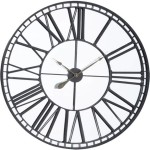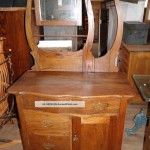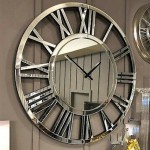How to Fix a Broken Side Mirror on a Car
A broken side mirror is a common automotive mishap that can range from a minor annoyance to a significant safety hazard. Driving with a damaged side mirror can impair visibility, making lane changes, parking, and other maneuvers more challenging and potentially dangerous. While professional repair is always an option, many drivers can successfully repair or replace a broken side mirror themselves, saving time and money. This article provides a comprehensive guide to assessing the damage, acquiring the necessary materials, and performing the repair or replacement process.
Before undertaking any repairs, it is crucial to determine the extent of the damage. Side mirror damage can vary widely, from a cracked mirror glass to a completely detached housing. A thorough inspection will help determine the appropriate repair strategy and the required materials. Minor cracks in the mirror glass might be temporarily addressed with repair kits, while more extensive damage may necessitate replacing the entire mirror assembly.
Safety should be the primary concern throughout the repair process. Wearing safety glasses and gloves is recommended to protect the eyes and hands from shards of glass and sharp edges. Work in a well-lit area and take precautions to avoid damaging the surrounding paintwork or other vehicle components. Disconnecting the car’s battery may be necessary if the side mirror has electrical components, such as integrated turn signals or heating elements.
Assessing the Damage and Determining the Repair Strategy
The first step in fixing a broken side mirror is to carefully assess the damage. This involves a detailed examination of the mirror glass, the housing, and the mounting mechanism. The following aspects should be considered:
Mirror Glass Condition: Look for cracks, chips, or complete shattering of the mirror glass. Small cracks can sometimes be repaired with specialized rearview mirror repair kits. These kits typically involve injecting a resin into the crack to bond the glass and improve visibility. However, if the glass is severely damaged or shattered, replacement is the only viable option.
Housing Integrity: Examine the mirror housing for cracks, breaks, or missing pieces. The housing protects the internal components of the mirror and provides a secure mounting point. If the housing is significantly damaged, it may need to be replaced along with the mirror glass. In some cases, the housing can be repaired using epoxy or other bonding agents, but this is typically a temporary solution.
Mounting Mechanism: Inspect the mechanism that attaches the mirror to the car door. Check for loose bolts, broken brackets, or damaged wiring. If the mounting mechanism is damaged, the mirror may not be securely attached, which could lead to further damage or even detachment while driving. If the mounting mechanism is severely damaged, the entire side mirror assembly may need to be replaced.
Electrical Components: If the side mirror has electrical features such as integrated turn signals, heating elements, or power adjustment, check the wiring and connectors for damage. Damaged wiring can cause these features to malfunction. Repairing electrical components may require specialized tools and knowledge, and it may be best to consult with a professional if you are not comfortable working with electrical systems.
Once the damage has been thoroughly assessed, a repair strategy can be developed. This strategy will determine whether to repair the existing mirror, replace the mirror glass, or replace the entire side mirror assembly.
Gathering the Necessary Tools and Materials
After assessing the damage and determining the appropriate repair strategy, the next step is to gather the necessary tools and materials. The specific tools and materials required will depend on the type of repair being performed. However, some common items that may be needed include:
Safety Glasses: These are essential for protecting your eyes from shards of glass and other debris.
Gloves: Gloves will protect your hands from sharp edges and chemicals.
Screwdrivers: A variety of screwdrivers, including Phillips head and flathead, may be needed to remove screws and panels.
Socket Set: A socket set with various sizes of sockets and a ratchet wrench will be useful for removing bolts and nuts.
Pliers: Pliers can be used for gripping, bending, and cutting wires.
Putty Knife or Plastic Scraper: These tools can be used to remove adhesive and old mirror glass.
Heat Gun or Hair Dryer: A heat gun or hair dryer can be used to soften adhesive and make it easier to remove old mirror glass.
Adhesive: Automotive-grade adhesive is needed to secure the new mirror glass or side mirror assembly.
Replacement Mirror Glass or Side Mirror Assembly: Ensure that the replacement part is compatible with your vehicle’s make, model, and year.
Cleaning Supplies: Glass cleaner and a clean cloth will be needed to clean the mirror and surrounding surfaces.
Electrical Tape or Wire Connectors: If the side mirror has electrical components, electrical tape or wire connectors may be needed to repair or reconnect wiring.
It's important to ensure the replacement parts are a correct match for the vehicle. Double-check the make, model, and year to avoid ordering the wrong part. Online retailers and local auto parts stores often have tools that can help verify compatibility.
Performing the Repair or Replacement
Once all the necessary tools and materials have been gathered, the repair or replacement process can begin. The specific steps involved will depend on the type of repair being performed. However, the following general guidelines can be followed:
Remove the Old Mirror Glass or Side Mirror Assembly: Start by carefully removing the old mirror glass or side mirror assembly. This may involve removing screws, panels, or clips. Refer to your vehicle’s repair manual or online resources for specific instructions. If removing mirror glass from the existing housing, use a heat gun (set on low) or a hair dryer to soften the adhesive. Gently pry the old mirror glass away from the housing using a putty knife or plastic scraper. Be careful not to damage the housing during this process.
Prepare the Surface: Clean the surface where the new mirror glass or side mirror assembly will be attached. Remove any adhesive residue, dirt, or debris. Use glass cleaner and a clean cloth to clean the mirror glass and surrounding surfaces. For surfaces where new adhesive will be applied, ensure the area is clean and dry for optimal bonding.
Install the New Mirror Glass or Side Mirror Assembly: Apply adhesive to the back of the new mirror glass or on the mounting surface of the side mirror housing. Carefully align the new mirror glass or side mirror assembly with the housing or mounting point. Press firmly to ensure that the adhesive bonds properly. If installing a complete side mirror assembly, connect any electrical connectors. Carefully route the wiring and secure it in place to prevent it from interfering with the door or window operation.
Secure the Assembly: Secure the new side mirror assembly to the car door using the appropriate screws, bolts, or clips. Ensure that the assembly is securely attached and that it does not wobble or vibrate. Tighten all fasteners to the proper torque specifications, as specified in the vehicle's repair manual.
Test the Functionality: Once the repair or replacement is complete, test the functionality of the side mirror. Check that the mirror is properly aligned and that it provides a clear view of the road. If the side mirror has electrical features, such as integrated turn signals or power adjustment, test to ensure that these features are working properly.
Clean Up: Clean up any debris or spills that may have occurred during the repair process. Dispose of any old mirror glass or side mirror assembly properly. Recycled glass is an environmentally sound disposal option.
If the repair involves electrical components, it is important to disconnect the car battery before starting the work to prevent electrical shocks and short circuits. When reconnecting the battery, make sure to follow the manufacturer's instructions to avoid damaging the vehicle's electrical system.
Depending on the complexity of the wiring, a multimeter can be used to verify the continuity and voltage of the electrical circuits. This helps to diagnose any potential issues and ensure that the electrical components are functioning correctly. Consult the vehicle’s wiring diagram for the correct pinouts and voltage levels.
Finally, be sure to double-check all connections and fasteners before closing up the door panel. A loose connection or fastener can lead to future problems and may require additional repairs. It's always better to be thorough and ensure that everything is properly secured.

Automotive Maintenance 101 Replacing Side View Mirrors

3 Ways To Replace A Car S Side View Mirror Wikihow

Replace A Broken Side View Mirror Diy Family Handyman

How To Fix A Broken Car Side View Mirror Easy And Free

Broken Side Mirror Here S How To Get It Fixed By A Mechanic Quickly In The Garage With Carparts Com

Someone Broke My Car Mirror Here S What I Did

Do You Need Vehicle Mirror Damage Repair Glasper

How To Prevent Side View Mirror Damage Auto Glass Express Windshield Replacement Repair

Broken Side Mirror What Are The Repair Options And Cost

Broken Side Mirror What Are The Repair Options And Cost








